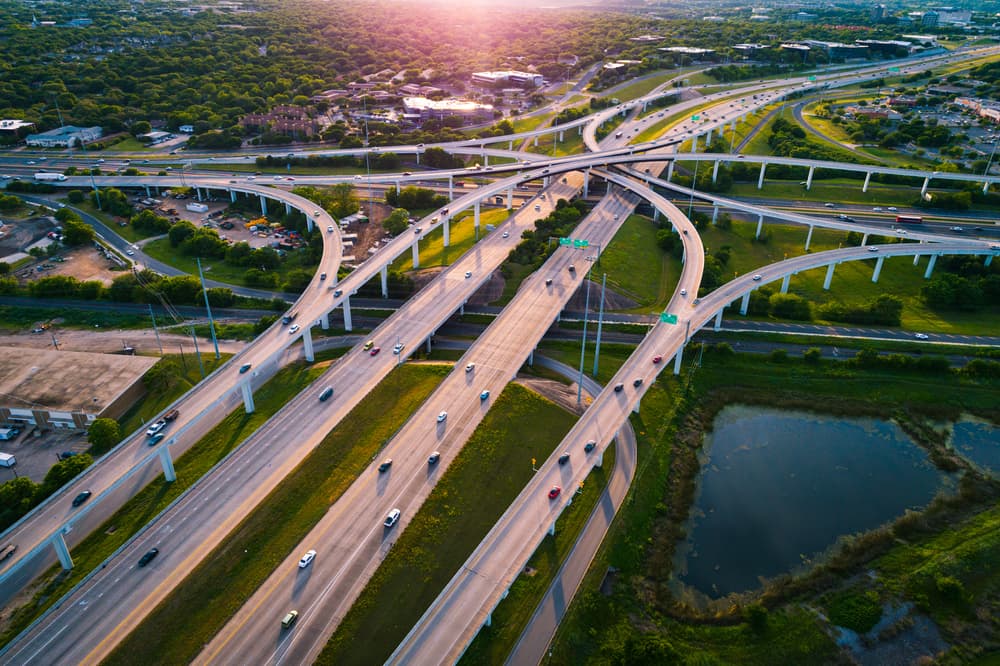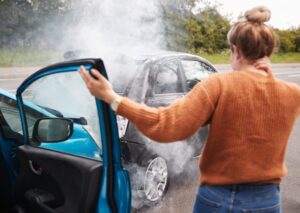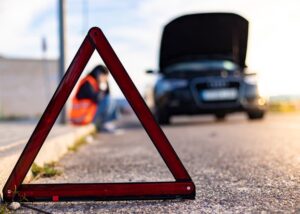Waco’s Most Dangerous Intersections

Waco, Texas, has many dangerous traffic intersections, primarily due to the heavier traffic in these areas and the propensity for drivers to behave negligently. If you suffered injuries in a traffic intersection accident, a knowledgeable car accident attorney in Waco can review your legal options with you and take the necessary steps on your behalf.
First, your lawyer can gather documents about your case, including police reports, medical records, and medical bills. Your lawyer can then assemble these documents into a settlement demand package, negotiate with the insurance company adjuster on your behalf, or litigate your case to a resolution in court.
Where Are the Most Dangerous Traffic Intersections in Waco?
Like many cities, Waco, Texas, has several risky traffic intersections that demand heightened attention and caution from both drivers and authorities. These dangerous intersections often see a greater number of collisions and include the following:
- One notorious trouble spot is the intersection of Valley Mills Drive and Waco Drive, where converging lanes and heavy traffic create a constant challenge for motorists.
- Another problematic area is the crossroads of New Road and Bagby Avenue, where a complex layout often leads to confusion among drivers, contributing to a higher-than-average accident rate.
- The intersection of Franklin Avenue and University Parks Drive poses dangers with its intricate signal system and the constant flow of pedestrians from Baylor University.
- The junction of Sanger Avenue and 18th Street has been a focal point for accidents, primarily due to a combination of high-speed traffic and limited visibility.
- Additionally, the intersection at Lake Air Drive and Bosque Boulevard presents challenges with its multiple turning lanes and the convergence of diverse traffic streams. This area demands heightened caution, especially during peak hours when traffic volume intensifies.
- In the downtown district, the crossing of 4th Street and Washington Avenue stands out as a hotspot for accidents. The heavy flow of both vehicular and pedestrian traffic at this intersection exacerbates its potential for accidents.
While these intersections are problematic, recognizing that ongoing urban development and changes in traffic patterns may affect the safety dynamics of Waco’s roadways is essential. Collaborative efforts between city planners, law enforcement, and the community are essential to address these challenges effectively.
Waco, Texas, faces traffic safety concerns at several intersections, each presenting unique challenges. Proactive measures, such as improved signage, enhanced traffic control, safer driving, and community engagement, are critical to fostering a safer environment for all road users in the city.
How Do Intersection Accidents Happen in Waco, Texas?
Negligent drivers play a huge role in increased accidents at traffic intersections, contributing to heightened risks and compromised road safety for all users. The inattentiveness of these drivers and their failure to adhere to traffic regulations significantly amplify the potential for collisions. The following are common examples of driver negligence that frequently lead to accidents in Waco:
- Disregarding right-of-way rules is a common occurrence at intersections. Negligent drivers often fail to yield when required, disrupting traffic flow and leading to dangerous situations that increase the probability of accidents. Right-of-way violations can also cause serious harm to pedestrians using crosswalks or cyclists using bike lanes.
- Distracted driving emerges as a substantial factor in intersection accidents. Negligent drivers may engage in activities such as texting, talking on the phone, or adjusting in-car entertainment systems, diverting their attention from the road. Such distractions impair their ability to react promptly to changing traffic conditions, contributing to a higher incidence of accidents. Public awareness campaigns and stringent penalties for distracted driving are crucial in addressing this issue.
- Impatience is another characteristic of negligent drivers that exacerbates intersection-related risks. Some drivers display impulsive behavior, such as running red lights or making hasty turns, disregarding the safety of other road users. Law enforcement efforts focused on monitoring and penalizing such behaviors should be a deterrent, but many drivers still run red lights and commit other serious traffic violations.
- Failure to adhere to traffic signals and signs is a recurring theme among negligent drivers. Disobeying stop signs, running red lights, or ignoring yield signs can lead to chaotic scenarios at intersections, creating an environment for accidents.
- Aggressive driving behaviors, such as tailgating and abrupt lane changes, further contribute to the risk of accidents at intersections. Negligent drivers who engage in such conduct create a hazardous environment, increasing the likelihood of collisions. Comprehensive strategies involving heightened law enforcement presence and educational campaigns try to address and mitigate these aggressive driving behaviors. However, aggressive driving crashes continue to occur in Waco.
The effect of negligent drivers on intersection-related accidents is significant. Addressing this issue requires a multifaceted approach, encompassing stringent law enforcement, public awareness campaigns, and educational initiatives to instill responsible driving behaviors and enhance overall road safety.
Common Injuries in Traffic Intersection Accidents
In traffic intersection accidents stemming from another driver’s negligent behavior, the injuries drivers and passengers sustain can be varied and often severe. Whiplash is one of the most common injuries, resulting from the sudden deceleration or impact typical in intersection collisions. The rapid back-and-forth motion of the neck can lead to neck pain, stiffness, and headaches, affecting both drivers and passengers.

Head injuries, ranging from minor concussions to more severe traumatic brain injuries (TBIs), are prevalent outcomes of intersection accidents. The force of impact with the vehicle’s interior can cause head injuries, manifesting as confusion, dizziness, or, in severe cases, long-term cognitive impairment. Such injuries can have lasting consequences, affecting the overall well-being and quality of life of those involved.
Chest injuries are also common in intersection accidents, frequently occurring because of the driver’s impact with the steering wheel or when airbags deploy. Fractured ribs, bruised lungs, and other chest-related injuries can result, leading to significant pain and potential complications. Moreover, the deployment of airbags, while a crucial safety feature, can cause injuries to the face, hands, and arms of drivers and passengers.
Broken bones are frequent outcomes, affecting various parts of the body depending on the nature of the collision. Impact with the dashboard or side panels can lead to fractures in the arms, legs, or other extremities. The severity of these injuries varies but can significantly affect mobility and require extensive medical intervention for recovery.
Soft tissue injuries, encompassing damage to muscles, tendons, and ligaments, are prevalent in intersection accidents. The abrupt forces exerted on the body during a collision can result in strains, sprains, or more severe soft-tissue damage. These injuries often require rehabilitation and may lead to chronic pain if not adequately addressed.
Psychological trauma, such as post-traumatic stress disorder (PTSD) and anxiety, can also manifest after a traffic intersection accident. The emotional toll of a collision, especially as a result of another driver’s negligence, can have lasting effects on mental health, affecting daily functioning and overall well-being.
Recognizing and addressing these common injuries is crucial in addressing the aftermath of intersection accidents that negligent drivers cause. Comprehensive medical evaluations, ongoing rehabilitation, and support for psychological well-being are necessary components in the recovery process for those injured in these incidents.
How to Prove a Traffic Intersection Accident Case
Proving negligence in a traffic intersection accident involves a thorough examination of several key factors:
- Eyewitness Accounts — Eyewitness accounts play an important role, providing firsthand perspectives on the events leading up to the accident. These testimonies can shed light on crucial details, such as traffic signal violations, erratic driving behavior, or failure to yield, establishing a foundation for proving negligence.
- Traffic Camera Footage — Traffic camera footage becomes valuable evidence in demonstrating negligence. These recordings capture the sequence of events leading to the collision, offering an unbiased and objective account of the circumstances. Reviewing the footage can reveal red-light violations, sudden lane changes, or other reckless behaviors, strengthening the case against the negligent driver.
- Police Reports — Police reports generated at the accident scene are instrumental in establishing negligence. Officers document their observations, interview witnesses, and assess the overall situation to determine fault. A thorough examination of these reports can uncover any citations issued to the negligent driver, providing concrete evidence of their role in causing the intersection accident.
- Accident Reconstruction — Accident reconstruction experts contribute their expertise by analyzing the crash site, vehicle damage, and other relevant factors. Their assessments help recreate the sequence of events, providing a scientific basis for establishing negligence. These experts play a crucial role in presenting a comprehensive and compelling case against the negligent driver by identifying factors such as speed, braking patterns, and impact angles.
- Medical Records — Medical records of injuries the accident victim has sustained in the accident contribute to the proof of negligence. Detailed documentation of the injuries, treatments received, and associated medical expenses establishes a direct link between the collision and the harm caused. This evidence reinforces the repercussions of the negligent driver’s actions on the well-being of the victims.
- Cell Phone Records — Cell phone records can be compelling evidence, especially in cases involving distracted driving. Phone usage data, such as calls or text messages sent or received around the time of the accident, can substantiate claims of negligence due to distractions on the part of the at-fault driver.
Proving negligence in a traffic intersection accident case involving another driver requires a comprehensive approach. Eyewitness accounts, traffic camera footage, police reports, accident reconstruction analyses, medical records, and cell phone data collectively establish a compelling case against the negligent driver. Each piece of evidence plays a vital role in painting a detailed picture of the circumstances surrounding the accident, reinforcing the claim of negligence, and facilitating a fair resolution for the victims.
Possible Damages in Waco Traffic Intersection Accident Cases
In personal injury claims or lawsuits, victims may seek various types of damages to compensate for the physical, emotional, and financial toll endured.

Economic damages address the tangible financial losses that victims have sustained as a direct result of the accident. Medical expenses, including hospital bills, are significant components of economic damages. Victims may also seek compensation for future medical expenses if their injuries necessitate long-term or lifelong treatment. The costs of ongoing medical care, rehabilitation, and therapy are part of the economic damages sought in a personal injury claim.
Lost income and diminished earning capacity are additional economic damages, acknowledging the financial consequences of the injuries on the victim’s ability to work and generate income. Furthermore, property damage, covering the repair or replacement of the victim’s vehicle or other personal property damaged in the accident, falls under economic damages. This category seeks to restore the victim’s financial position to what it was before the collision.
Non-economic damages, on the other hand, encompass the intangible losses the accident victim experiences, including pain and suffering, emotional distress, and loss of enjoyment of life. These damages aim to acknowledge the profound effects of the accident on the victim’s overall well-being, going beyond quantifiable monetary losses.
Furthermore, the accident victim may pursue punitive damages in certain cases where the negligent driver’s conduct is especially reckless or malicious. These damages serve as a deterrent, punishing the at-fault party for egregious behavior and discouraging similar actions in the future. However, punitive damages are not available in every case and typically require proof of intentional misconduct or a blatant disregard for the safety of others.
Victims of traffic accidents due to another driver’s negligence may pursue various types of damages in a personal injury claim or lawsuit. Economic damages encompass measurable financial losses the accident victim has suffered. Non-economic damages address intangible losses, and punitive damages serve as a deterrent for egregious conduct. Each type of damage seeks to provide comprehensive compensation, recognizing the multifaceted repercussions of the accident on the victim’s life.
Call an Experienced Car Accident Lawyer Today

Ted R. Lorenz, Car Accident Lawyer in Waco, Texas
Traffic intersection accidents in Waco, Texas, can result in debilitating injuries for all affected drivers and passengers, as well as serious property damage. If you suffered injuries in an intersection accident due to someone else’s negligence, an experienced Waco personal injury lawyer can help. Your lawyer can assess your accident circumstances and file a claim on your behalf or litigate your case in the Texas court system to a favorable resolution.
